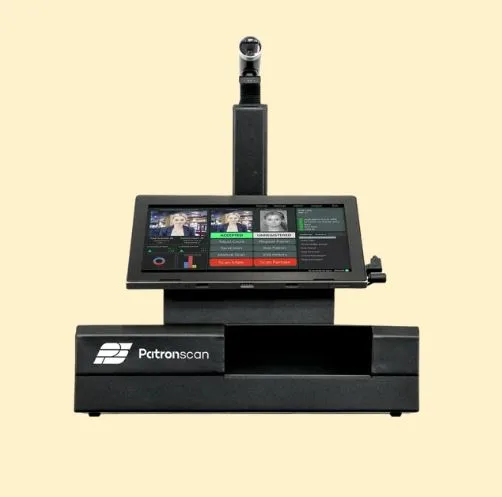How Decentralization Is Reshaping the Future of Financial Products
The next generation of financial products is being shaped by decentralization. As trust in traditional systems fades, people are turning to tools that give them more control over their money. Instead of relying on banks or financial institutions, users now want services that are open, borderless, and built for individual freedom.
This shift isn’t just about using new technology — it’s about changing the way finance works.
In this guide, you’ll explore what financial products will look like in a decentralized world, and how they’re designed to serve users — not institutions.
What Will Financial Products Look Like in a Decentralized World?
In a decentralized world, financial products are being designed with the user at the center. They’re more flexible, open, and built to work across borders without restrictions. So let’s cover how this next generation of financial tools is taking shape.
Full User Ownership
In decentralized finance, the user is always in control. Unlike traditional systems where your money sits in a bank or a centralized exchange, decentralized systems allow you to hold your funds directly in a digital wallet — like MetaMask or Trust Wallet.
You don’t need a third party to manage, store, or give you access to your assets. This means no one can freeze your account, block your money, or limit how much you can withdraw.
With full ownership, there’s also no need to wait for customer service to help you unlock your funds. Everything is in your hands, 24/7. This shift shows that control, not convenience, is what many users truly want when it comes to managing their money.
Azamat Kalam, CPO of PIVEX says, “Next-gen financial products will be modular, borderless, and user-owned. Forget about waiting days for transfers or needing a banker’s approval to access your funds. We’re designing Pivex with this future in mind — a toolkit where users can build, trade, and earn on their terms without intermediaries or fine print.”
Available to Everyone
One of the biggest promises of decentralized finance is inclusivity. In the traditional financial world, many people are locked out because they don’t have the right documents, credit scores, or access to local banking services. But decentralized platforms don’t require all that. All you need is a smartphone and an internet connection. That’s it.
You don’t have to fill out forms or go through background checks. Just connect your wallet to a platform, and you can instantly start using services like savings, loans, trading, or investing.
This is especially important for the 1.4 billion people globally who are considered “unbanked” by the World Bank — people who don’t have access to a basic bank account.
Smart Contract-Based Tools
Decentralized finance is powered by smart contracts — self-executing programs that run on blockchain networks. These contracts automate the financial services we usually get from banks, like lending, borrowing, saving, or even buying insurance. Once the rules are written into the code, the smart contract takes care of the rest. There’s no need for approval, no paperwork, and no human error, says Daniel Macia, Founder and CEO of Astrad.
For example, instead of going to a bank to apply for a loan, you can deposit your crypto into a decentralized lending platform like Aave or Compound. This process is not only faster and cheaper, but also more fair and transparent, since it follows rules written into open-source code — not hidden behind a desk or policy manual.
Always On, No Waiting
Another major benefit of decentralized finance is that it never sleeps. Unlike traditional financial institutions that close on weekends or holidays and operate within limited hours, decentralized tools work 24 hours a day, 7 days a week.
This means you can send money, take out a loan, invest, or trade at any time — whether it’s early morning or midnight.
Transactions are also completed in real time. There’s no waiting for a bank to process your request or for payment clearance to go through. You click a button, and the action happens within seconds. This speed and availability are especially useful in emergencies or fast-moving markets, where every second counts.
Programmable Finance
Decentralized tools also offer something traditional banks never could: customization. These new financial products are programmable, meaning you can design them to work the way you want.
If you want to automatically invest a portion of your income every week? Or split payments between savings, bills, and donations without thinking about it? All of that is possible with just a few clicks using decentralized tools.
This kind of automation used to be available only to the wealthy, through custom financial services. It gives users more power, control, and freedom to shape how they manage money.
Transparent by Default
Transparency is built into the core of decentralized systems. All activity takes place on public blockchains like Ethereum or Solana, which means every transaction, rule, and smart contract is visible to anyone. You don’t have to “trust” the platform — you can verify how it works by reading the code or reviewing transaction history, says Sundze Mohammed, Founder & CEO of RTCoupons.
This level of openness makes it harder for platforms to hide fees, misuse funds, or act unfairly. If a platform is promising something, users can look under the hood to see if it’s true.
How Is Decentralization Driving These Changes?
Here’s how decentralization is driving this major transformation in the financial world.
No Central Authority
In decentralized finance, there is no single company or bank in charge of running the system. Instead of relying on one authority to hold your money or approve your actions, everything runs on open-source code, which is maintained and updated by developers and communities around the world. This removes the risk of censorship, bans, or sudden shutdowns that can happen in centralized platforms.
For example, if a traditional platform decides to block your account or stop operations in your region, you have no control over it. But with decentralized tools, users remain in control no matter where they are.
This kind of independence is a major reason why more people are switching to decentralized platforms.
Open-Source and Public
Most decentralized applications (dApps) are open-source, which means their code is freely available for anyone to view, test, or improve. This level of openness brings more transparency and trust because nothing is hidden. Anyone can check how the platform works, spot issues, or even build better tools on top of existing ones.
This public nature leads to faster innovation. Developers from around the world can contribute ideas, fix bugs, or launch new versions of the same tool.
Many decentralized apps use the same base code, with added features from the community — making them safer and more user-friendly over time.
Lower Fees, Faster Transactions
Traditional financial services often involve high fees and long wait times, especially for cross-border transfers. These delays are caused by multiple intermediaries like banks and payment processors, each taking a cut and adding time to the process.
In contrast, decentralized systems remove the middlemen. Platforms built on fast, low-cost blockchains like Solana and Arbitrum process transactions instantly and for just a few cents. This makes even small payments affordable and efficient — something traditional systems struggle to offer.
Cross-Border and Borderless
A major advantage of decentralization is global access. No matter where you live or what currency you use, you can access financial services with just an internet connection — no banks or borders involved.
Cross-border payments also become faster and cheaper. Whether you’re sending money to family or working with people overseas, decentralized tools make the process smooth and instant.
Designed for the User
Traditional financial tools often feel built for institutions, not individuals. They’re full of complex rules and paperwork. In contrast, decentralized tools are made to be simple, flexible, and user-friendly.
What sets them apart is community governance. Users can vote on updates and features, giving them a real voice in how the platform evolves. This makes decentralized finance more democratic and user-focused.
Growing Knowledge and Tools
One of the biggest reasons more people are adopting decentralized finance is that learning how to use it is getting easier. There are now thousands of tutorials, videos, forums, and communities dedicated to helping beginners understand wallets, trading, and how to stay safe online. This growing base of knowledge is making decentralized tools more accessible to everyone, including people who are not tech experts.
In the past, using decentralized platforms might have felt complicated, but now, step-by-step guides and user-friendly apps are simplifying the process.
As more people learn and share their experiences, the barrier to entry continues to shrink. This rise in education and awareness is helping decentralization grow faster and reach more users around the world.
Final Thoughts
The next generation of financial products is here. Thanks to decentralization, anyone can now own, move, and grow their money without waiting on banks or getting stuck in slow systems. These tools are faster, more open, and put control back in your hands.
As this shift grows, one thing’s clear… The future of finance won’t be run by middlemen, it’ll be shaped by people, powered by code, and open to all.


